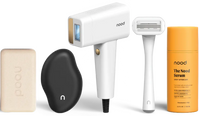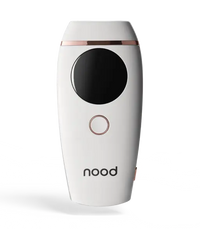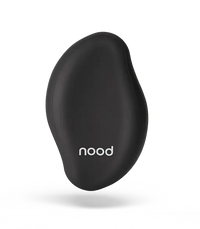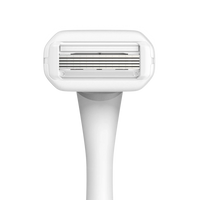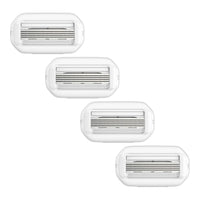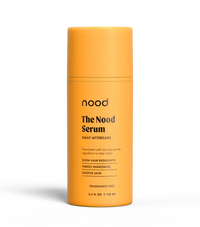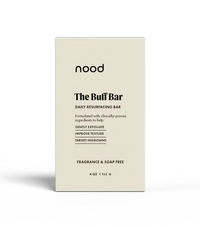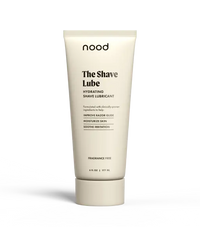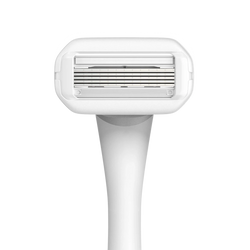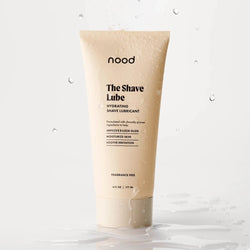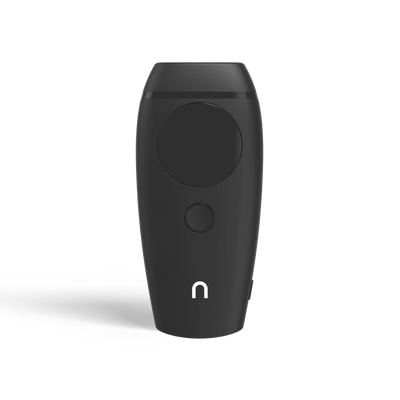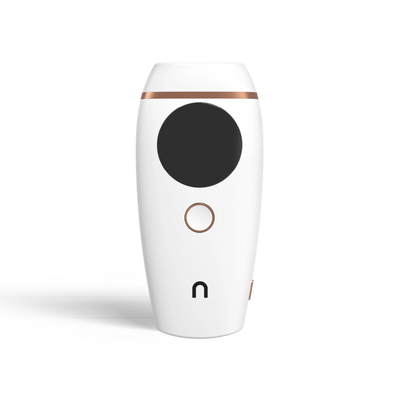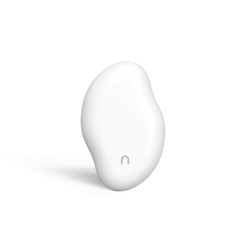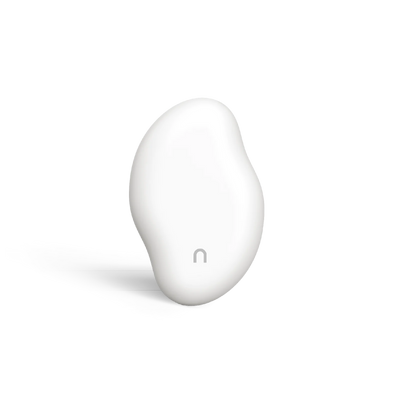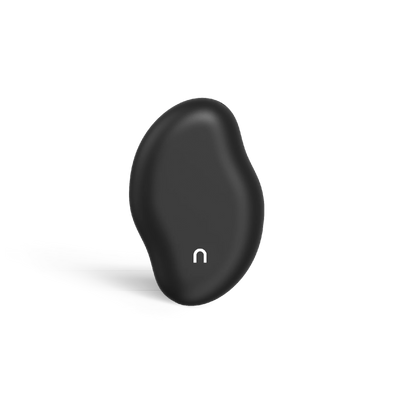
5 Ways To Permanently Remove Facial Hair (Plus Alternatives)
Are you bothered by some extra hair on your face and ready to leave it behind forever?
While it’s up to each person how much hair they’re comfortable with, it’s normal to want to clear an area of the body of hair permanently. Sure, bleaching may make your peach fuzz mustache a little less noticeable, but seeing it in the mirror might still be annoying.
Only a few methods (laser, IPL, and electrolysis) can permanently remove facial hair. Both laser hair removal IPL require follow-up sessions but are essentially permanent. You can also talk to your dermatologist about prescription creams or pick up a depilator cream at the drugstore.
We detail the 5 most permanent hair removal options available, plus a few other cost-effective alternatives that don’t last as long.
Just an FYI: If you have hirsutism (male-pattern hair growth in females) due to a condition like PCOS, only a medication designed for that condition can prevent new hair growth. In addition, laser, IPL, and electrolysis will only remove facial hair for people with PCOS if you’re actively treating the hormone condition (like with metformin or birth control).
1. Laser Hair Removal
- Cost: $195-$250 per session (full face)
- Number of sessions required: 4-12
- Follow-up treatments: Once every 3-12 months
- Expected pain level: Moderate
Laser hair removal is a popular and effective method for permanently reducing facial hair. This FDA-approved procedure uses concentrated light to target and damage the hair follicles, ultimately slowing hair growth.
It’s not entirely permanent, but laser hair removal can significantly reduce hair growth, making it a top choice if you seek long-lasting results.
Before you get laser hair removal, consult with a board-certified dermatologist or a licensed laser technician. They’ll assess your skin tone, hair type, and hair growth pattern to determine if your suitably.
Laser hair removal works best on individuals with dark hair and lighter skin tones, as the laser targets the pigment in the hair.
The tech will use a handheld laser device to deliver light pulses to the targeted area during the procedure. You may feel slight snapping, like a rubber band against your skin.
The treatment usually requires multiple sessions spaced 4-6 weeks apart, depending on the area and your hair growth cycle.
While laser hair removal is generally safe, some potential side effects include temporary redness, swelling, and skin irritation.
Follow your dermatologist's or technician's post-treatment care instructions, like avoiding sun exposure and using a moisturizer with SPF, to minimize the risk of complications.
Although laser hair removal can be more expensive than other methods, many people find the long-lasting results and reduced hair growth worth the investment. Some maintenance treatments may be necessary to maintain optimal results.
2. IPL (At-Home Laser)
- Cost: $189-$269 (one-time device purchase)
- Number of sessions required: 16 (twice a week for 8 weeks)
- Follow-up treatments: Once every 3-12 months
- Expected pain level: Negligible
Intense Pulsed Light (IPL) is an at-home hair removal method that uses broad-spectrum light to target and damage hair follicles, similar to laser hair removal.
IPL devices can provide (almost) permanent hair removal results. Did we mention it’s less than 1/10th the cost of professional laser treatment?
What is the best way to remove facial hair on a female? The best way to remove facial hair on a female — permanently — is IPL. It’s less expensive than the alternatives, doesn’t hurt, and is as effective as laser hair removal.
IPL devices emit multiple wavelengths of light that penetrate the skin and target the pigment in the hair follicles. This process damages the follicles, reducing hair growth over time.
This at-home laser facial hair removal treatment is effective for most people, especially if you have dark hair and lighter skin tones. If you have darker skin or super light or red hair, IPL probably won’t be super effective.
Before using an IPL device, read the manufacturer's instructions carefully and perform a patch test on a small area of the skin to ensure you don't experience any adverse reactions.
You’ll need to use an IPL device twice weekly for 8 weeks for optimal results. And it’s not technically permanent, as you’ll need to follow up with extra IPL sessions every 6-12 months.
While IPL devices are safe for at-home use, potential side effects include temporary redness, swelling, and skin irritation. To minimize these risks, follow your device's guidelines and avoid sun exposure before and after treatments.
3. Electrolysis
- Cost: $50-125 per session
- Number of sessions required: 15-30 (spaced a few weeks apart)
- Follow-up treatments: None
- Expected pain level: Moderate to high
Electrolysis is an effective method for permanent facial hair removal, and it's been around for over a century. This FDA-approved treatment involves inserting a tiny needle into your hair follicle and applying a small electric current to destroy the follicle, ultimately preventing new hair growth.
Unlike laser hair removal and IPL, electrolysis works on all hair and skin types, making it a versatile solution for anyone looking to say goodbye to their unwanted facial hair.
Electrolysis is technically the only “permanent” hair removal option, meaning you don’t need follow-up treatment. But it’s also expensive, painful, and time-consuming.
During an initial consultation, a licensed electrologist will examine your skin and hair, then discuss your treatment goals to determine the best course of action.
The procedure feels like a slight pinch or a warm sensation. You can adjust the intensity to your comfort level, but note that electrolysis is more painful than laser hair removal and significantly more painful than IPL.
How do I stop chin hair from growing? Electrolysis can permanently eliminate hair from growing back after you’re through with all your sessions. Laser or IPL are also great alternatives and only need touch-ups every 3-12 months.
Electrolysis typically requires 15 to 30 or more sessions spaced a few weeks apart. How many treatments you need depends on factors like hair thickness, hair growth cycle, and the size of the treatment area.
Like any procedure, electrolysis may cause side effects, such as temporary redness, swelling, and skin irritation. Following your electrologist's aftercare instructions helps minimize the risks and makes for a smoother recovery.
4. Prescription Hair Removal Cream
- Cost: $177-$225 per tube (without insurance)
- Number of treatments required: Twice daily (4-8 weeks for results)
- Follow-up treatments: Daily (if you stop using it, your hair will go back to how it was before)
- Expected pain level: Negligible to mild
If you prefer a less invasive approach to facial hair removal, prescription hair removal creams like Vaniqa (eflornithine) might be the answer. This FDA-approved topical treatment slows down hair growth at the follicle level, making it a handy addition to your skincare routine.
Vaniqa is a product designed specifically for women who deal with unwanted facial hair, and it works on a range of skin types. Although it doesn't remove existing hair, consistent use can help reduce the appearance of facial hair over time.
To obtain Vaniqa, dermatologists and healthcare professionals require a prescription. You should apply the cream twice a day to the affected area, following the instructions provided by your doctor.
Be patient with Vaniqa, as it may take up to 4-8 weeks to see noticeable results. Remember, consistency is critical when it comes to this treatment.
This cream is generally well-tolerated, but you might experience mild skin irritation, redness, or temporary burning sensations. Talk to your prescriber if you experience any severe or long-lasting side effects.
5. Chemical Depilation
- Cost: $5-$15 per tube
- Number of treatments required: One
- Follow-up treatments: Every 3-4 days (hair will continue to grow back)
- Expected pain level: None
Chemical depilatories are creams or gels containing active ingredients like calcium thioglycolate or potassium hydroxide. These chemicals break down the hair's protein structure so you can easily wipe it away.
Chemical depilation is another less invasive hair removal technique, but it’s also not a permanent solution and must be done regularly to remove excess hair.
You can get depilatories at most drugstores and without a prescription.
Before using a chemical depilatory, perform a patch test on a small, discreet area of your skin to test for adverse reactions. Follow the manufacturer's instructions for application, and don't exceed the recommended time on the skin, to avoid irritating sensitive skin.
Chemical depilatories are generally safe when used as directed. Potential side effects may include temporary redness, skin irritation, and allergic reactions. Don't use depilatories on broken or irritated skin; remember to do a patch test first!
Other (Less Permanent) Hair Removal Methods
We’ve talked a lot about ways you can get rid of facial and body hair in permanent(ish) ways. But with the exception of IPL (our favorite, obviously), they’re pretty expensive and/or inconvenient.
If you’re just trying to figure out what method of hair removal works for you and ready to say goodbye to razors, these other options might be appropriate, too.
Waxing
Waxing is especially popular for removing hair on the upper lip and defining your eyebrows. To wax, apply a layer of warm wax to the skin and then quickly peel the wax (or waxing strip) off in the opposite direction of your hair growth, taking the hair with it.
This method removes hair from the root, so it takes longer to grow back than shaving methods. But waxing also hurts like a b!tch and causes temporary redness and, sometimes, skin irritation.
We recommend visiting a professional for facial waxing to ensure the process is done safely and effectively.
Threading
Threading is an ancient hair removal technique that involves twisting a thin cotton thread around unwanted hair to pull it out at the root. This method is gentle on the skin, making it suitable for sensitive areas like the face.
Threading provides precise hair removal and can be an excellent option for shaping eyebrows. Remember that threading results are temporary, like waxing, and you'll need regular appointments to maintain the look.
(Also, I tried threading once for fun and was in tears from the pain. Think tweezing, but your entire eyebrow all at once. But hey, it lasts a little longer than a wax!)
Tweezing
Using a pair of tweezers to pluck hairs from the root individually is the hair removal method many of us learn first. It's ideal for small areas or occasional stray hairs but time-consuming for larger sizes.
If you're feeling adventurous, try an epilator. This auto-tweezer twists upwards to remove hair from the root. Epilators work faster than traditional tweezers, but they must be more precise.
Tweezing can cause temporary redness and, if not done correctly, may lead to ingrown hairs. Unlike waxing, tweezing works best if you pluck in the direction of hair growth rather than against it.
Remember to clean your tweezers with alcohol before and after use to reduce the risk of infection.
Honey Waxing
Honey waxing is a natural alternative to traditional waxing that uses a mixture of honey, sugar, and lemon juice to create a wax-like consistency. This mixture is applied to the skin and removed in the same way as traditional wax.
Honey waxing is gentle on the skin and can be more eco-friendly than store-bought waxing products. Just like a standard wax, this isn't last more than about 3 weeks before you have to rinse and repeat.
Sugar Scrubs
Sugar scrubs are a gentle, natural DIY exfoliation method that can help reduce the appearance of facial hair. Mixing sugar with a carrier oil, like coconut or olive oil, and gently massaging it into the skin can remove dead skin cells and promote hair growth in the right direction.
While this method won't remove hair, it can help prevent ingrown hairs and create a smoother appearance for regrowth.
Ready to say goodbye to unwanted facial hair forever?
If you read that list and didn’t immediately want the best IPL device on the market… we’re not sure what to tell you.
IPL (also called at-home laser hair removal) is, by far, the most cost-effective, pain-free way to permanently remove facial hair. And while you’re at it, why not clear up those unmentionable areas, legs, and armpits?!
Get The Flasher 2.0 by Nood for just $189. That’s $189, one time, to get the same results as you would by paying that much for every single session of professional hair removal. If you’ve got a few extra bucks to spend, try The Noodist Kit to upgrade to our cleanser and exfoliant!
We know… it’s a no-brainer!
The Noodist Pro Kit

$507.00
Our bestselling hair removal products, now all in one bundle.… read more

